Ormer Mayfair is in the basement of the Flemings Hotel in Half Moon Street, which adjoins Piccadilly. Tables are quite large and well-spaced, and the noise levels in the room are reassuringly low. The executive chef is Sofian Msetfi, born in England (with Moroccan and Irish heritage) and who previously was head chef at Michelin-starred The Oak Room at Adare Manor in County Limerick in Ireland. Prior to that, he had worked at Midsummer House (for four years), The Hand and Flowers and Longridge Restaurant. The restaurant was awarded a Michelin star in February 2024.
The seven-course tasting menu was £115, with full pescatarian, vegetarian and vegan alternatives offered at the same price. There was also a five-course option at £79. The extensive wine list had 304 labels and ranged in price from £40 to £5,950, with a median price of £111 and an average markup to retail price of 3.4 times, which is high but not unusual in Mayfair. Sample references were Agiorgitiko Ktima Driopi Reserve 2016 at £47 for a bottle that you can find in the high street for £17, Domaine Zind-Humbrecht Pinot Gris Turckheim 2020 at £62 compared to its retail price of £25, and Sophie Cinier Pouilly-Fuissé Collection 2018 at £98 for a wine that will set you back £37 in the high street. For those with the means there was Ridge Montebello 2010 at £600 compared to its retail price of £268, and Jean Louis Chave Hermitage Blanc 1998 at £850 for a wine whose current market value is £286. The list covers the world, so if you are looking for an Istrian Merlot blend or a wine from China called Pretty Pony then this list has you covered.
The meal began with a selection of canapes. Duck liver parfait came with preserved fig and fig gel with a fig tuile. This had lovely deep liver flavour and the fig was a well-chosen balancing accompaniment. Warm crumpets with English crème fraiche were topped with oscietra caviar from N25 and caramelized honey. This was an interesting mix of comfort and luxury. There was also veal shin beignet with smoked onion emulsion and herbs (from a kitchen garden at Down Hall in Essex). This was nicely made, with plenty of meaty flavour, the herbs balancing the richness (15/20 average). The bread was a barley brioche, which is this case was a hybrid between a soda bread and a true brioche. This was unusual and had a very good texture, served with Ampersand butter.
The first formal course was a modern interpretation of the classic Waldorf salad, whose original version in 1896 comprised just apple, celery and mayonnaise. Here the elements were fresh celery that had been julienned, celery leaves, grape gel, candied walnuts, grape slices, dehydrated Muscat grapes dressed with toasted walnut oil and finally a diced Roquefort jelly. The latter was made from whipping cream, Roquefort cheese, salt, milk and vegetarian gelatine. This all worked nicely together and was an original take on the classic dish (15/20).
This was followed by warm Iberico ham consommé that had been set as a ham jelly, served with pickled Bramley apple, Parmesan, crisp Iberico ham, apple caramel and a garnish of nasturtium leaves. This was an excellent dish, the richness of the ham nicely balanced by the apple, and the texture of the jelly was suitably silky (16/20).
Next was cured Cornish mackerel with sesame, kombu and a spiced nage. The mackerel, from Newlyn, was cured for two hours in vinegar, sesame, and XO sauce. This was served with a kombu gel and sesame emulsion with crispy kombu. Over all this was poured a spiced nage consommé flavoured with lemongrass, lime and chilli. This for me was the dish of the meal, with the consommé superbly balanced and its well-judged spices nicely enlivening the mackerel (17/20).
This was followed by Scottish langoustine with yuzu, saffron and a vanilla sabayon. The langoustines themselves were from Orkney and supplied by the classy supplier Keltic Seafare. The shellfish were roasted and rested on a seaweed butter that was made from the shells and heads of the langoustines. They were accompanied by yuzu gel, purslane, red sorrel and oyster leaf and ground voatsiperifery pepper from Madagascar. Alongside the langoustine tails was a sabayon of saffron and Madagascar vanilla. The components here were all high quality, but the langoustine was cooked a touch longer than ideal, and I found the vanilla flavour rather too dominant. Although there is certainly precedent in France for serving vanilla with fish, I have always found it a tricky pairing to pull off, as combining savoury and sweet is something of a culinary tightrope. That is a personal viewpoint, but for me the main issue was that the langoustines themselves could certainly have been cooked a touch less (14/20).
The final savoury course was milk-fed lamb from the Pyrenees, the meat first cooked on a vegetable trivet of roasted vegetables herbs and garlic, and then roasted. This was served suitably pink, and accompanied by cabbage that had been cooked in the lamb juices and then roasted. There was also cucumber gel, a touch of wasabi, lime gel and fresh lime. This came with a lamb sauce made from the lamb bones and trimming and reduce with red wine. On the side was a dish of confit lamb shoulder, Merguez lamb sausage (a Moroccan spicy sausage flavoured with harissa, sumac, fennel, garlic and chilli), croutons cooked in lamb fat and fresh lime, all this covered in potato foam. This was a good dish, and for me the star was the side dish of confit lamb and spicy sausage, which had excellent flavour (15/20).
Cheeses from Paxton and Whitfield were presented on a board, and were in good condition, served with truffle honey, onion chutney and fig chutney. An initial dessert of preserved English Oakchurch cherries came with buttermilk sorbet and pine, finished at the table with frozen preserve liqueur and pine oil. Pine is a tricky flavour to pull off but it worked well enough here, the cherries having good flavour (15/20).
For dessert, chocolate millefeuille was made using a premium “Tuma Yellow” 70% Nicaraguan dark chocolate, which comes from a single variety cacao tree. This was a pretty dish with chocolate puff pastry, a layer of chocolate ganache and a second layer of brown butter crème made using caramelised white chocolate and gelatine. Each layer also had a honey gel, with puff pastry leaf and Tahitian vanilla ice cream. This was all most enjoyable, the pastry very good and the chocolate richness was complemented by the lovely vanilla ice cream (16/20).
Coffee was Lavazza, an industrial coffee that feels to me entirely out of place in a Michelin-starred restaurant. London is full of speciality roasters these days so surely it makes sense to serve coffee of a quality that matches the other ingredients? A pretty petit four was a sweetbread dough made from butter, orange zest and chopped dates, sugar, confit orange, and Grand Marnier mascarpone. There was also lemon meringue jelly and dark chocolate made with Irish coffee and Manjari chocolate.
Service was excellent, with an especially impressive sommelier (Piotr). The bill came to £225 per person. If you shared a modest bottle of wine then a typical bill per person might come to around £170 or so, or around £130 if you went for the shorter menu. Overall this was a lovely evening with a meal that used high-class ingredients. It thoroughly deserves its Michelin star.
Further reviews: 13th Jan 2023 | 01st Feb 2017















































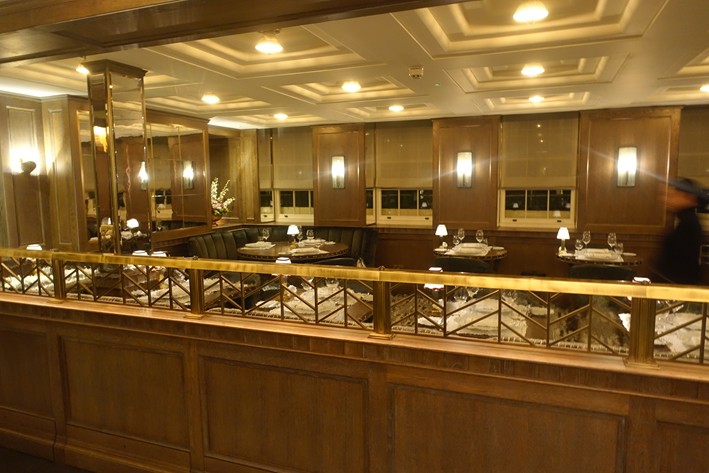

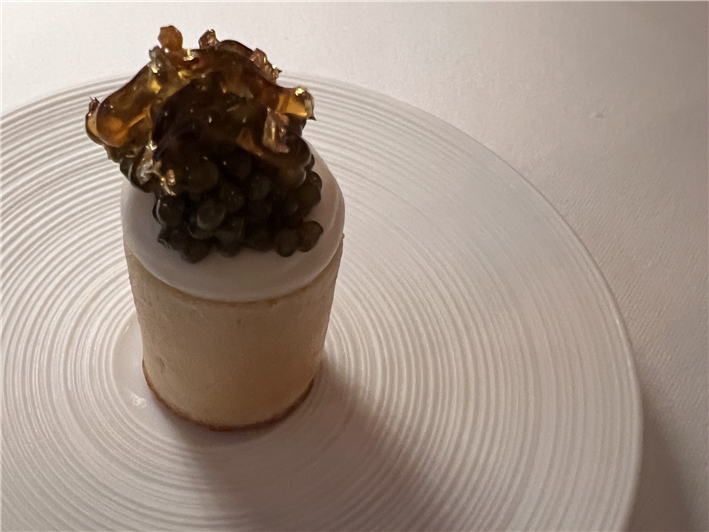
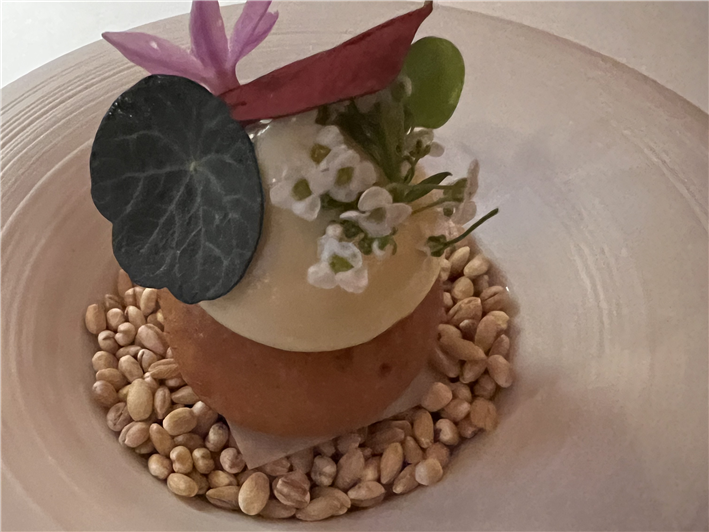
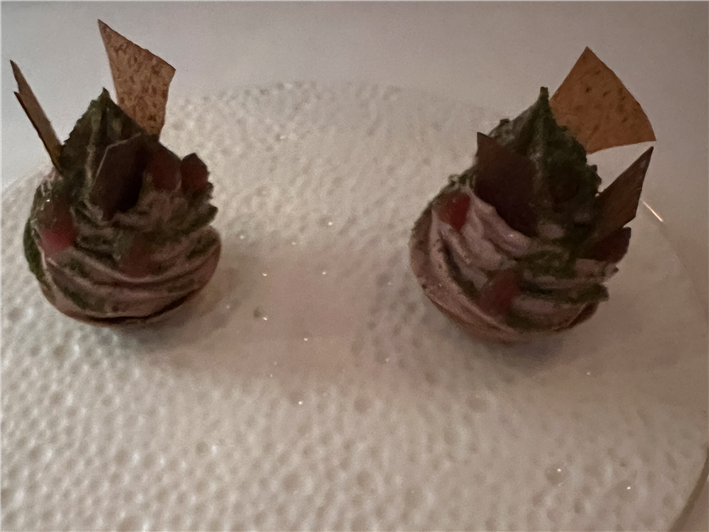
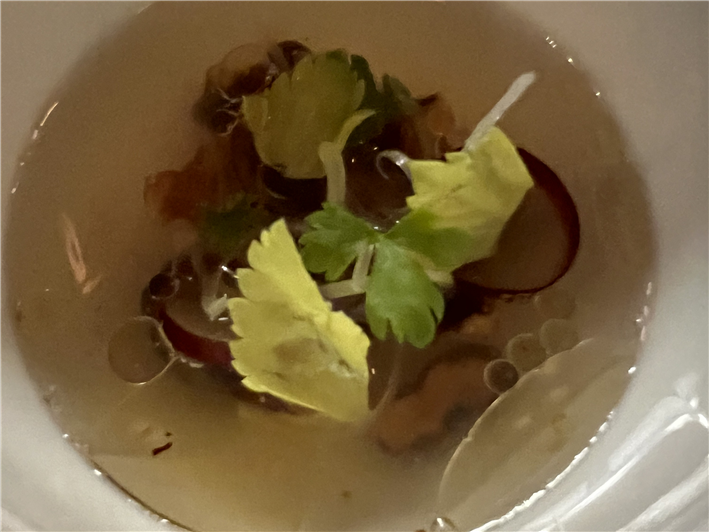
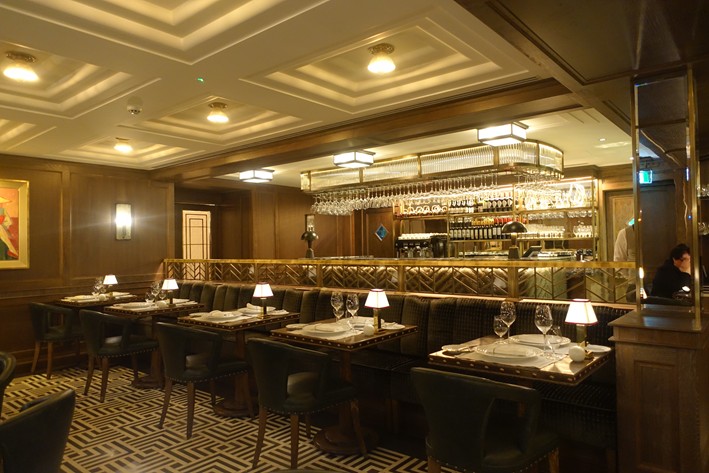

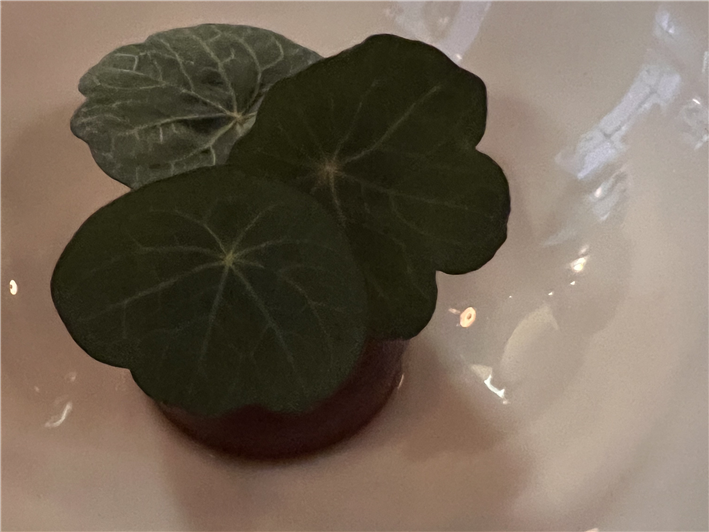
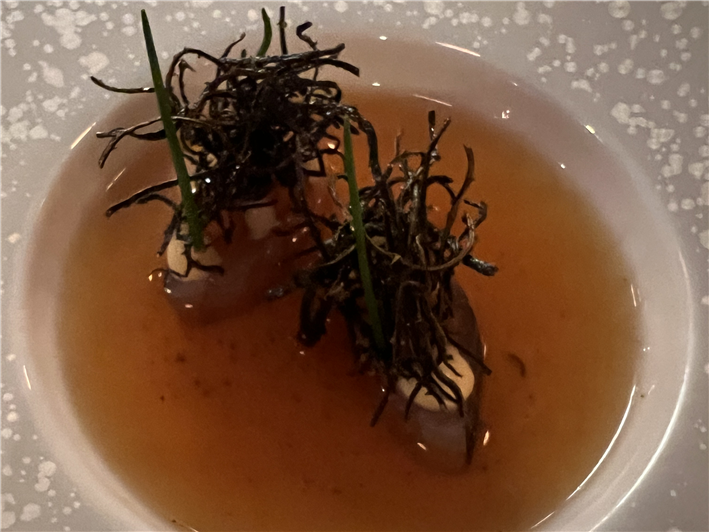

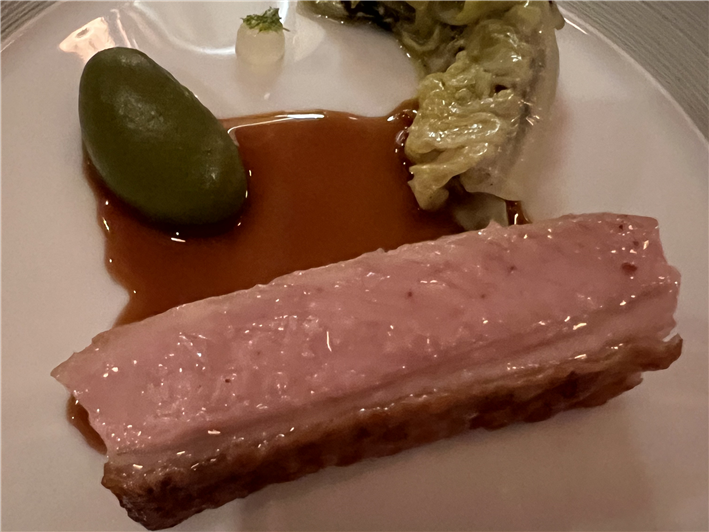
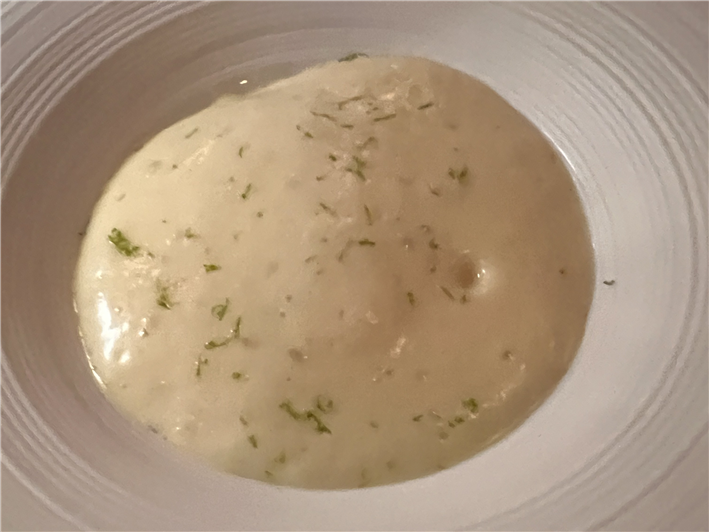

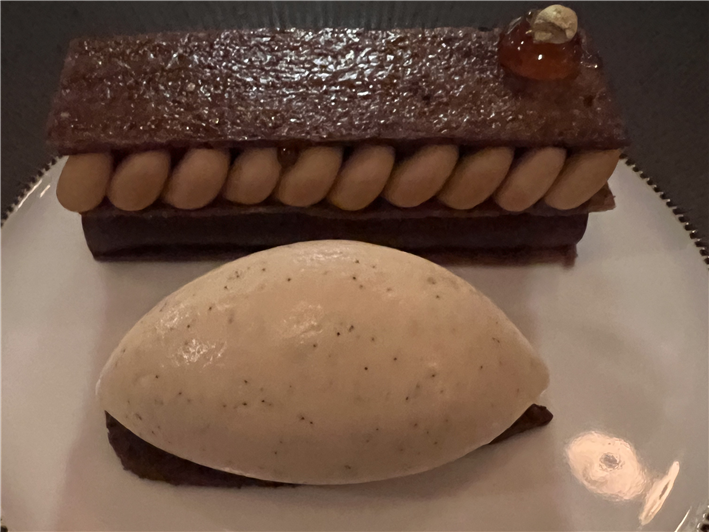

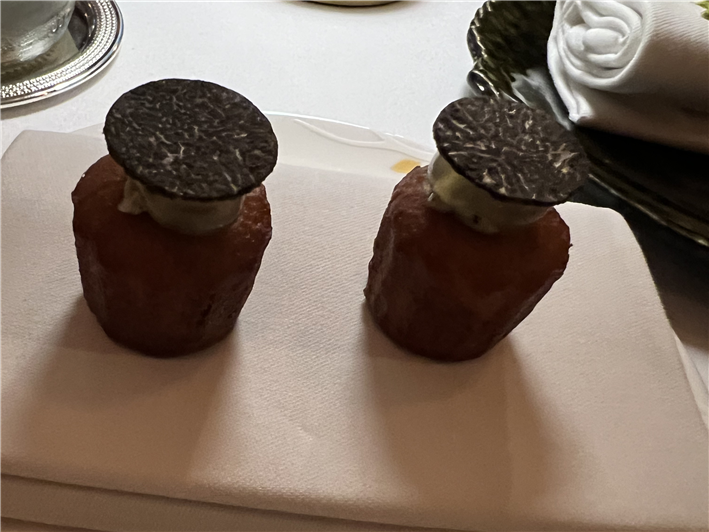
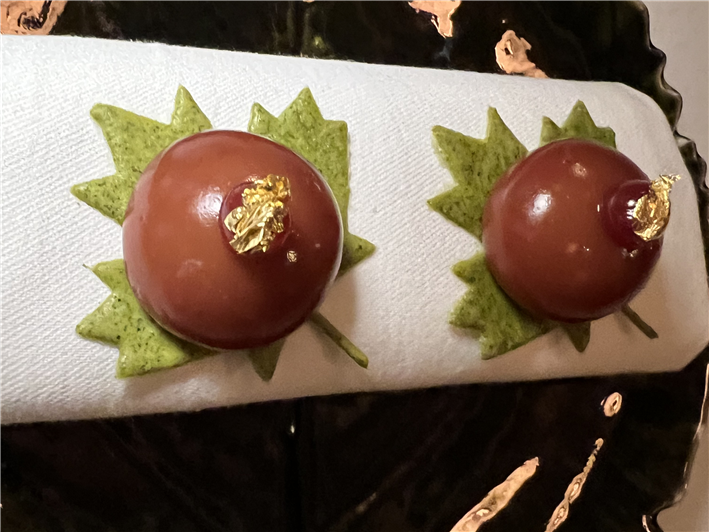
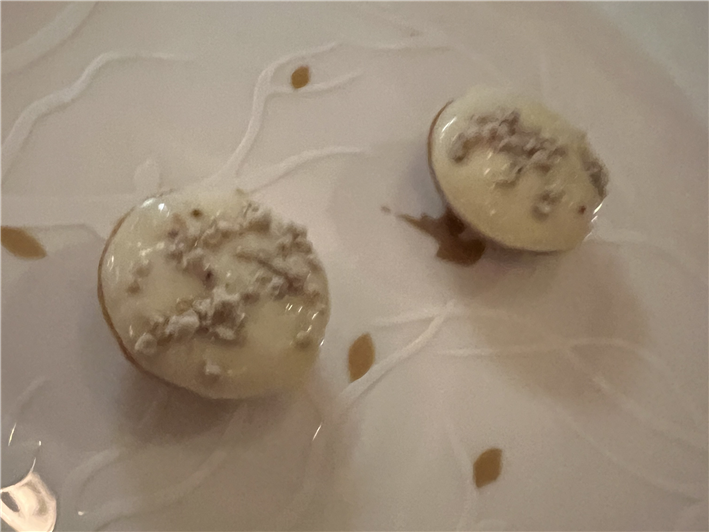
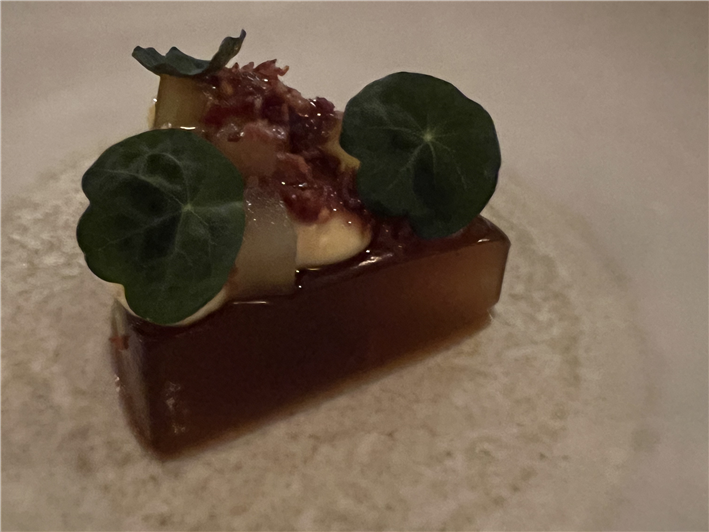
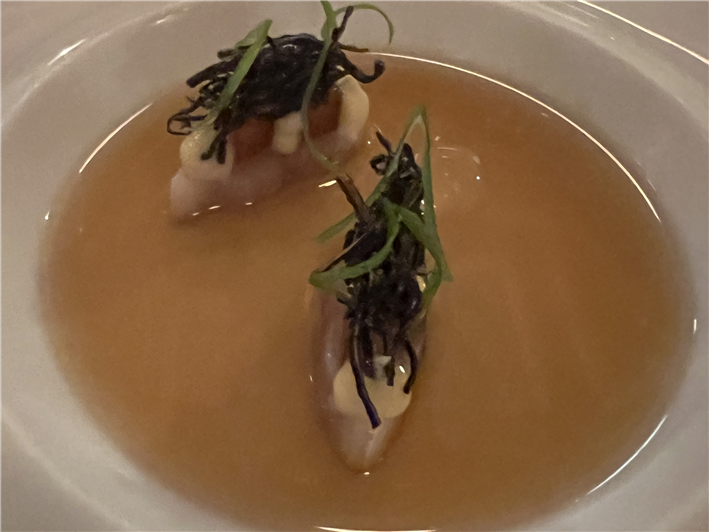

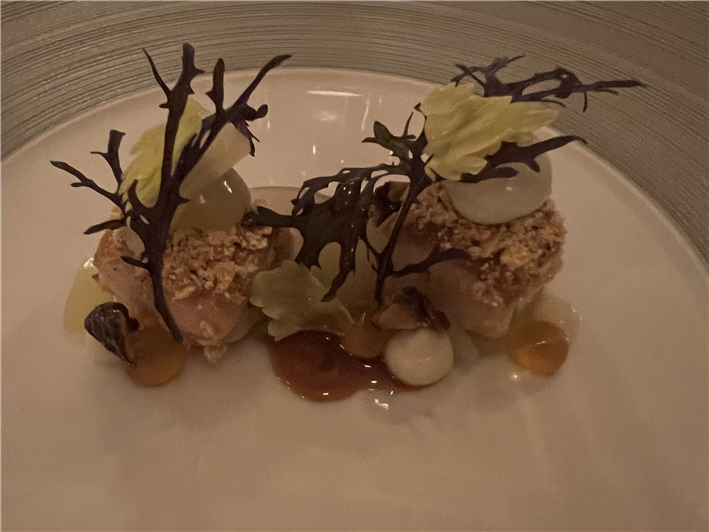
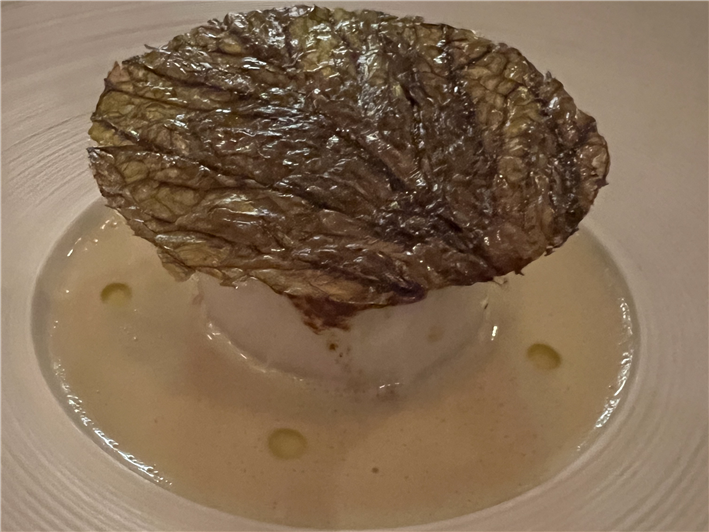
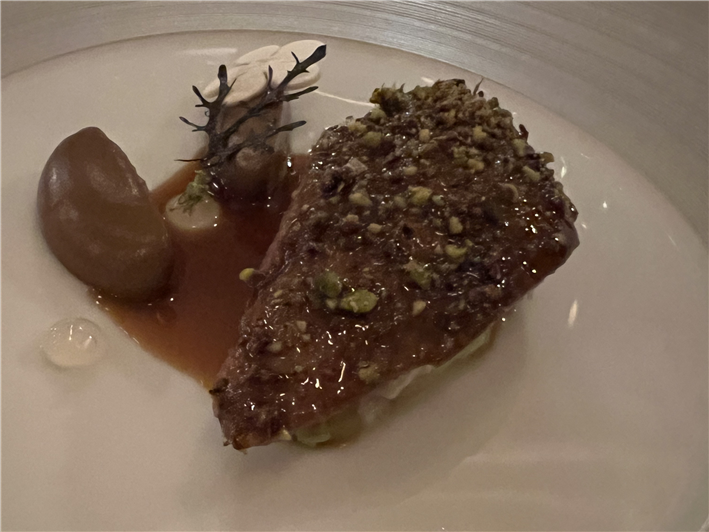


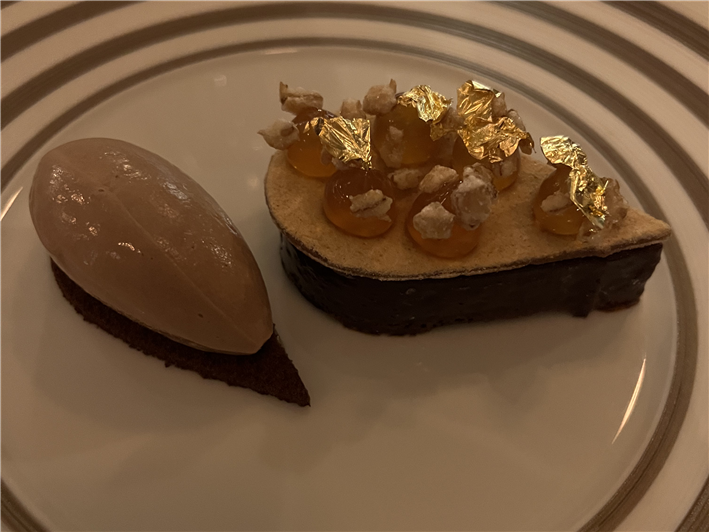
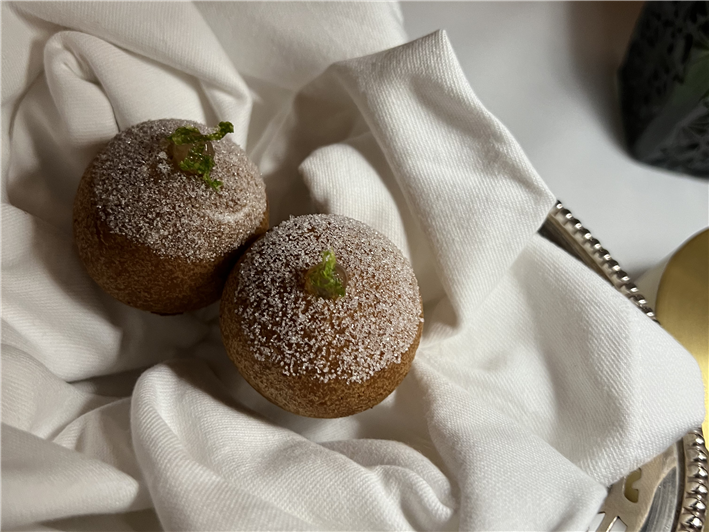

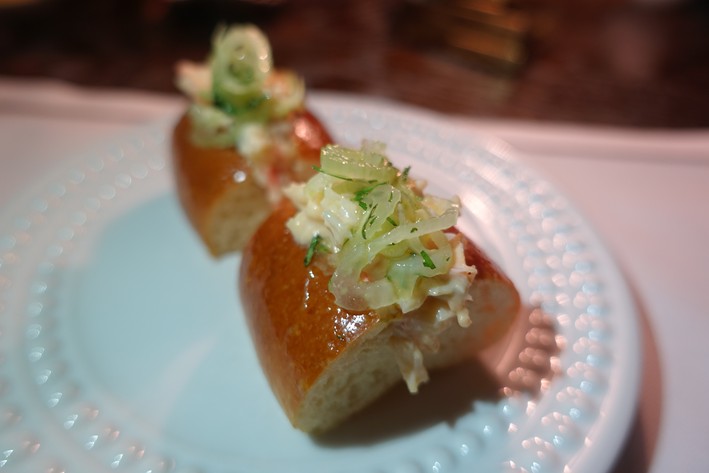
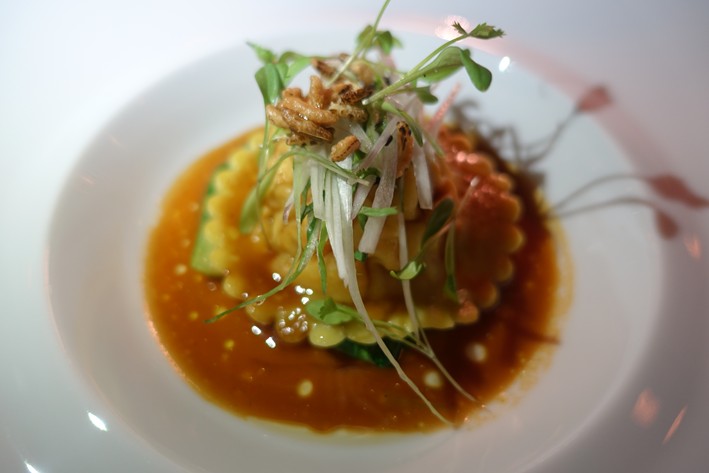


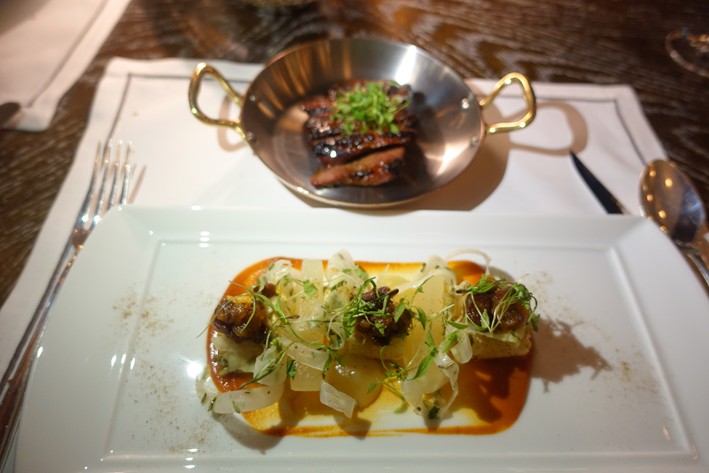
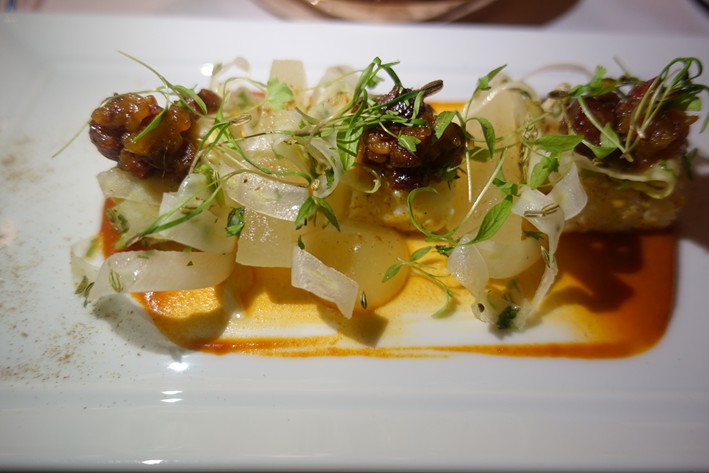
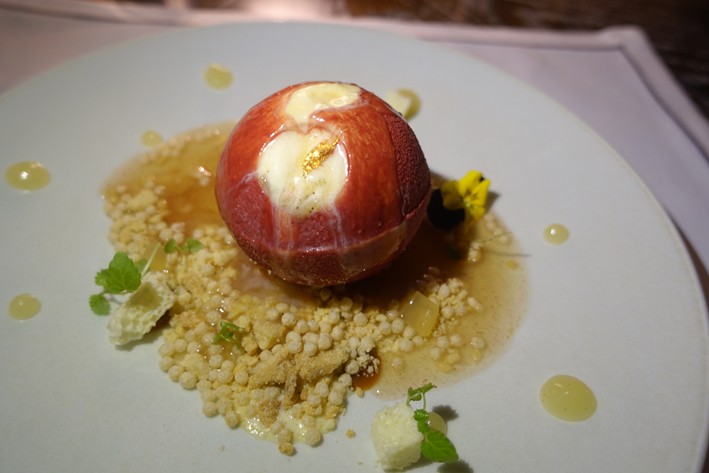

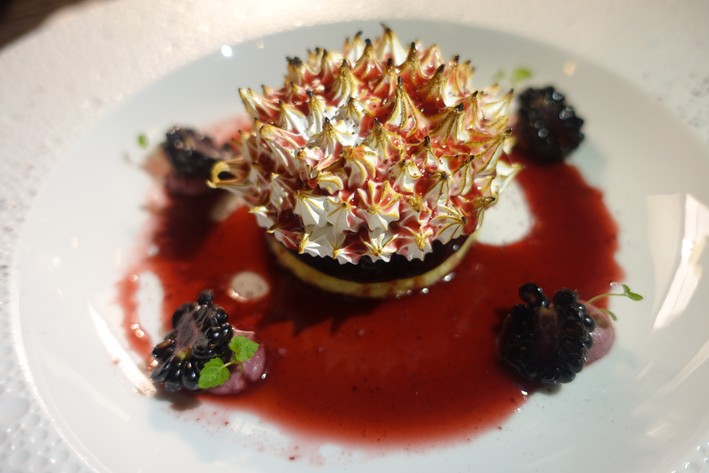


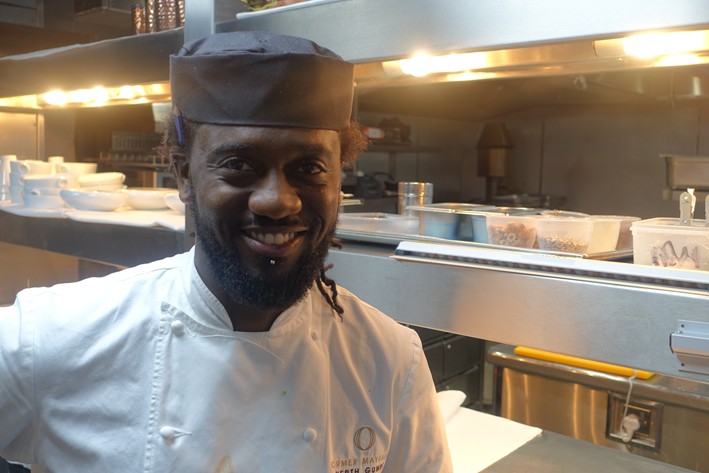

Add a comment
Thank you for submitting your comment, this will be checked and added to the website very soon.
User comments